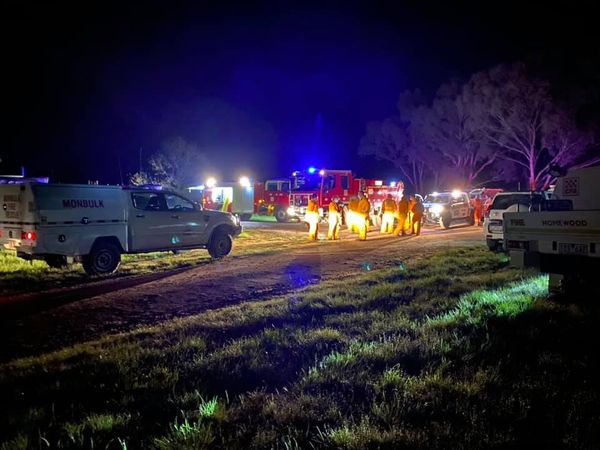 Crews worked into the night to rescue two occupants of a vehicle rollover
Crews worked into the night to rescue two occupants of a vehicle rollover
Recently introduced technology has assisted emergency services at a car rollover in Ghin Ghin over the weekend.
Just after 11pm on Friday evening, CFA was called to reports of a vehicle having rolled down an embankment with two occupants inside. Ambulance Victoria made the initial request for CFA assistance for four-wheel drive access to the area, with Victoria Police also on scene searching for the vehicle.
A combination of new and pre-existing technologies assisted emergency services in locating the vehicle in a timely manner.
Advanced Mobile Location (AML) data from the caller using their mobile phone from inside the vehicle was used to pinpoint the location of the incident to within 18 metres of the callers location, while CFA’s Resource Tracking System (RTS) was used to assist CFA’s vehicles in gaining access to the patients.
AML is a new technology introduced to Triple Zero (000) call taking services across Australia earlier this year, becoming available in Victoria in March. It provides greater accuracy to Triple Zero during an emergency from calls that originate from mobile smartphones. AML will access the location information available from a devices’ GPS capability, mobile network information, and other inputs such as Wi-Fi networks to calculate the caller’s location.
CFA’s RTS collects location data and displays the position of any vehicle that is fitted with a CFA Mobile radio with a GPS antenna. In this instance, the on-duty Fire Services Communications Controller was able to use RTS to guide crews on scene to the location of the vehicle, as provided by AML data, through difficult to access terrain.
As this was a multi-agency event involving Ambulance Victoria, Victoria Police and CFA, all responding crews were also able to communicate directly on recently introduced multi-agency radio channels.
CFA Deputy Chief Officer Garry Cook says that the use of these tools in conjunction shows the benefits that technology can have on-scene at incidents.
“The crews were able to utilise both the national AML service alongside CFA’s own RTS to locate the patients in a timely manner.”
“The combination of these complementary technologies meant that emergency services, who may have previously struggled to locate these patients in such a short amount of time, were able to pinpoint their location to a much smaller radius, ensuring they received medical attention as soon as possible.”
“These technologies are an asset to both CFA and the emergency service sector on the whole, and this incident is a prime example of how they can be used together to help our communities in their time of need. The advancements of these technologies benefit all of us”.
Acting Commander District 12 Paul Brislin said that local knowledge was also beneficial in the rescue operation.
“Using the technology available helped locate the vehicle and from there, it was the local knowledge that helped crews bring the patient out the right way.”
“The first patient was helped out by local crews and transported to hospital.
“The second occupant was found about 200 metres down a significant slope and local crews were able to walk that patient out, using rescue equipment from the Yea vehicle.”
Once safely removed from the vehicle, both patients were transported to hospital.
| Submitted by |
CFA News & Media |